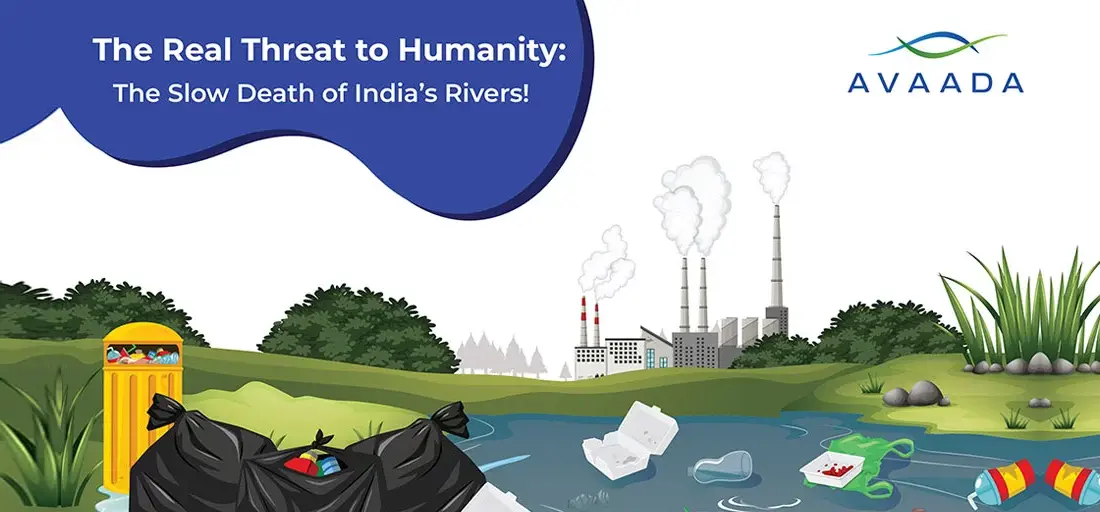Wind, the unseen energy and a natural resource, is a constant in our world, and the use of wind energy has become an essential component of our journey towards sustainable energy solutions. The first known use of wind energy dates to 5000 B.C., when ancient civilizations used wind to propel boats and grind grain. Harnessing this remarkable force, wind power has evolved to become a critical element in our modern pursuit of clean and renewable energy sources.
Wind energy has become an essential part of the sustainable energy mix as the world struggles with the pressing need to move away from fossil fuels and cut greenhouse gas emissions. This plentiful and clean energy source has several advantages beyond lowering our carbon footprint. It produces electricity using the kinetic energy of the wind.
Additionally, Tamil Nadu’s wind power capacity is around 23% of India’s total. Its total capacity is 1500 MW, which is the largest in India. As per TEDA (Tamil Nadu Energy Development Agency), the total installed capacity in Tamil Nadu is 7253 MW. Additionally, Maharashtra is one of the most prominent states to have installed wind power projects after Tamil Nadu in India.
What Is Wind Energy?
Wind energy, at its core, is a form of renewable energy harnessed from the natural movement of air in the Earth’s atmosphere. It’s a testament to the impressive power of nature, where the kinetic energy of moving air is captured and converted into electricity using wind turbines. These towering structures, adorned with large blades, are strategically placed in locations with high and consistent wind speeds, such as open plains, coastal areas, and mountain tops.
In the ever-evolving landscape of renewable energy sources, wind electricity generation and the uses of wind energy stand as crucial elements to discuss. As the world grapples with the urgent need to transition away from fossil fuels and reduce greenhouse gas emissions, the use of wind energy becomes essential. This clean and abundant source of power relies on the kinetic energy of the wind to generate electricity, offering a multitude of benefits that extend beyond reducing our carbon footprint.
This blog explores wind energy in depth, providing an explanation of wind energy, the uses of wind energy, and how it plays a crucial role in the generation of electricity in the modern era.
Also Read: How Wind Power Works

Benefits Of Wind Energy
Since wind energy has so many distinctive advantages, it is both desirable and crucial to the world’s energy landscape. Four of these distinct benefits are as follows:
- Wind turbines typically repay the lifetime carbon emissions associated with their deployment in less than a year before providing up to 30 years of virtually carbon-free electricity generation.
- Wind energy provides tax revenue to communities that host projects.
- As it does not require any combustion process, it is an energy with low greenhouse gas (GEI) emissions, the main culprits of global warming.
- Wind is an unlimited resource, and so is its use if there are sufficient air currents.
- Its maintenance costs and cost per kW produced are both relatively low. The advantage is significantly greater where the wind blows more forcefully.
What Are The Uses Of Wind Energy?
Let’s explore 10 uses of wind energy and why we should adopt it:
1. Free and Green:
Wind energy is renewable and eco-friendly, leaving a zero-to-little carbon footprint as no fossil fuels are burned for its production. It contributes to reducing carbon emissions by millions of tons annually.
2. Off-Grid Electricity:
Wind electricity generation offers a great solution for generating electricity in remote areas, including the countryside, mountains, and drought-prone regions.
3. Minimal Water Usage:
Wind power plants require very little water, helping conserve water resources. They produce no radioactive waste or greenhouse gases, aligning with global efforts to reduce pollution.
4. Space Efficiency:
Wind power plants occupy less space compared to oilfields and petrochemical facilities. The land beneath wind turbines can still be used for agriculture and other purposes, reducing its environmental impact.
5. Drought Resilience:
Wind power operates efficiently even in arid regions, assisting farmers and ranchers in pumping water to drought-affected areas and mitigating water scarcity.
6. Reduced Oil Dependency:
Wind energy reduces reliance on oil imports, helping countries become more self-sufficient and reducing the environmental impact of oil extraction. The diversified uses of wind energy, such as electricity generation and water pumping, further contribute to energy independence and sustainable resource utilization.
7. Long-Term Solution:
Wind electricity generation is sustainable, making it a dependable long-term energy solution. When combined with other renewables like solar energy solutions, it significantly reduces carbon emissions.
8. Job Creation:
Encouraging wind energy supports local employment opportunities, particularly in the agricultural and manufacturing sectors, contributing to economic growth.
9. Ecosystem Preservation:
Wind electricity generation aids in protecting natural forests and ecosystems, countering the negative effects of urbanization.
10. Cost-effective:
With ongoing advancements and subsidies, wind energy is becoming more cost-effective. While there may be initial setup costs, it offers long-term cost benefits and profit potential. Many governments provide incentives to promote renewable energy adoption.
How Does Wind Power Work?
Wind power works on a simple principle: instead of using electricity to make wind—like a fan—wind turbines use wind to make electricity. It operates by harnessing the kinetic energy of wind through wind turbines. Turbines often have two or three blades that function like helicopter rotor blades or airplane wings. When wind flows across these blades, it causes a decrease in air pressure on one side of the blade. This air pressure variation between the sides of the blades causes a lift and a drag. The lift has a stronger force than the drag, causing the rotor to spin. The rotor can have a shaft, gearbox, or direct-drive turbine connecting to the generator that produces AC electricity. Thus, the turbine system converts aerodynamic force into electricity.
How Is Wind Electricity Generated?
In its most common configuration, wind energy is generated when the rotor, which has three blades, rotates around a horizontal axis. The sweep diameter of these blades ranges from 80 to more than 200 meters. The longer the blades, the greater the electricity production capacity. As they rotate, the rotor drives a generator that produces electric energy. With conventional wind turbines, the electric generator requires a rotation speed of 1,000 to 2,000 rpm, whereas the blades turn more slowly (5 to 25 rpm). With these wind turbines, a multiplier (or gear box) is installed between the rotor and the generator to increase the rotation speed. More recently, direct-drive machines have been designed; with these, the generators operate with a variable rotation speed (5 to 2,000 rpm) and do not use a multiplier. The assembly is composed of the multiplier, and the generator forms the nacelle.

Also Read: Types of wind turbines
Conclusion
To conclude, in our search for a more sustainable future, wind energy stands out as one of the most promising and effective kinds of renewable energy. Its numerous benefits, including low environmental impact, scalability, and consistent supply, make it a standout resource for meeting our expanding energy needs while lowering our carbon footprint.
As the world struggles with the pressing task of combating climate change, wind energy emerges as a clean, dependable, and cost-effective solution that can assist us in transitioning away from fossil fuels and ensuring a greener, more sustainable world for future generations. Its capacity to capture the power of the wind, a resource that is both abundant and limitless, emphasizes the importance of wind energy in our continuous commitment to a sustainable future.
FAQ’s:
How Can Individuals And Communities Benefit From Wind Power?
Wind power generates clean energy, lowers energy prices, and creates jobs, all of which are advantages for people and communities. In addition, wind energy lowers its environmental impact, increases community involvement, and encourages education. It can promote environmentally friendly growth, maintain grid stability, and provide dependable, long-term energy production.
How Does The Location Impact The Efficiency Of Wind Electricity Generation?
The location has a big influence on how efficiently wind energy is generated. In regions with steady, strong winds, wind turbines operate most efficiently. The best places for winds are usually broad plains, mountain peaks, and coastal areas. The wind electricity production and overall efficacy of a wind energy project are determined by variables such as wind direction, speed, and turbulence in a particular area.
What Is The Role Of Wind Farms In Large-Scale Wind Electricity Generation?
Wind farms play a central role in large-scale wind electricity generation. They consist of multiple wind turbines strategically placed in areas with abundant and consistent wind resources. Wind farms efficiently harness kinetic energy from the wind, converting it into electricity. By aggregating multiple turbines in one location, wind farms achieve economies of scale, reducing the cost per unit of energy produced. This centralized approach also simplifies maintenance and grid integration. Wind farms are vital for meeting the growing global demand for clean energy and making wind power a practical and significant contributor to our electricity supply.








